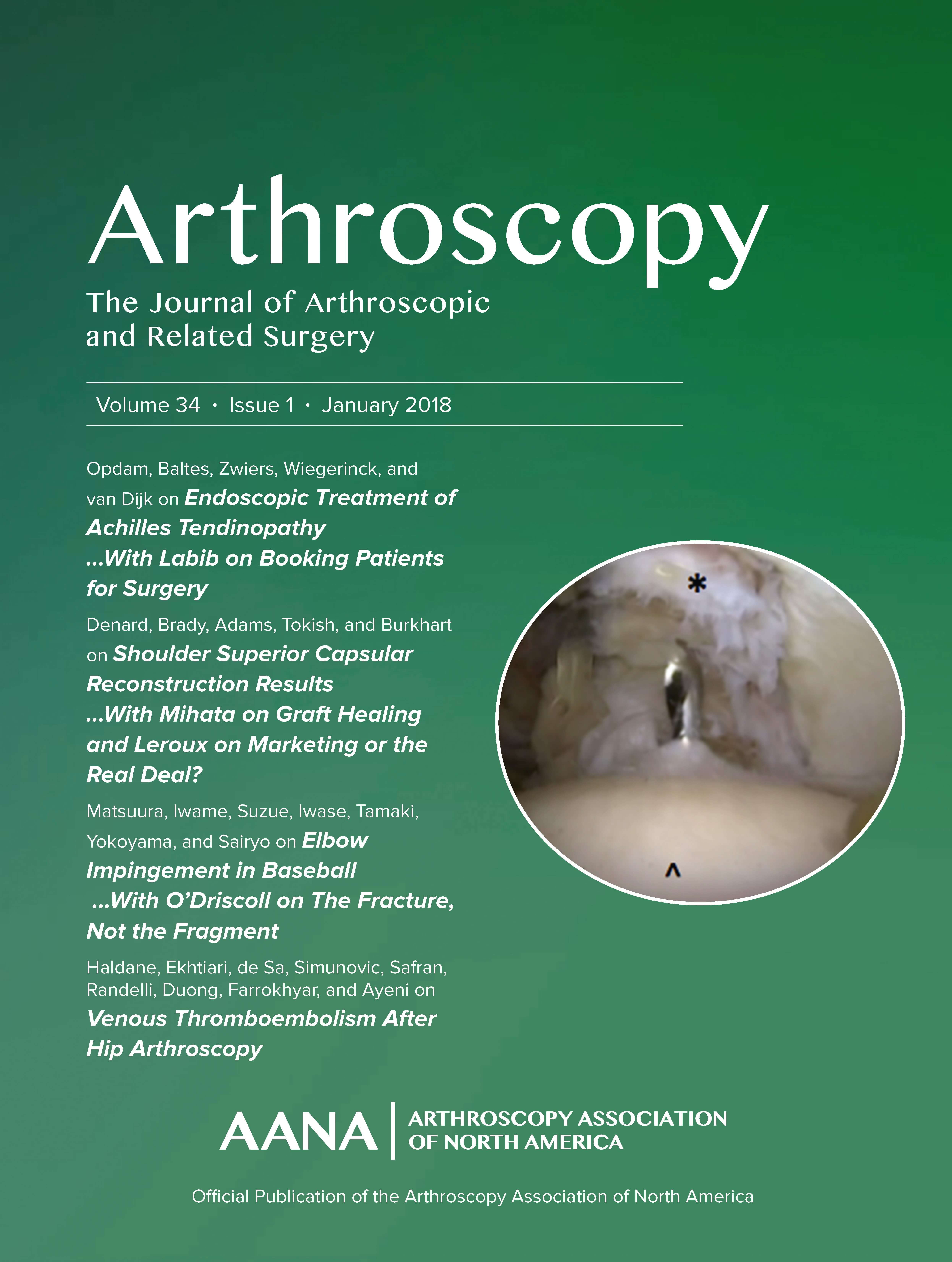
Double bundle ACL reconstruction provides superior anterior and rotational laxity results

Double bundle ACL reconstruction provides superior anterior and rotational laxity results
Single-bundle versus double-bundle reconstruction for anterior cruciate ligament rupture: a meta-analysis-does anatomy matter?
Arthroscopy. 2012 Mar;28(3):405-24Did you know you're eligible to earn 0.5 CME credits for reading this report? Click Here
Synopsis
From the literature, 12 studies were identified (5 randomized trials and 7 observational studies) that were compiled for meta-analysis of double and single bundle ACL reconstructions. Primary outcomes of concern were anterior and rotational laxity and the range of motion (ROM). Secondary outcomes were IKDC, Lachman test, Lysholm score and Tegner test. The meta-analysis of randomized trials indicated favorable results for double bundle reconstruction in terms of anterior and rotational laxity, while no differences in ROM were present.
Were the search methods used to find evidence (original research) on the primary question or questions stated?
Was the search for evidence reasonably comprehensive?
Were the criteria used for deciding which studies to include in the overview reported?
Was the bias in the selection of studies avoided?
Were the criteria used for assessing the validity of the included studies reported?
Was the validity of all of the studies referred to in the text assessed with use of appropriate criteria (either in selecting the studies for inclusion or in analyzing the studies that were cited)?
Were the methods used to combine the findings of the relevant studies (to reach a conclusion) reported?
Were the findings of the relevant studies combined appropriately relative to the primary question that the overview addresses?
Were the conclusions made by the author or authors supported by the data and or analysis reported in the overview?
How would you rate the scientific quality of this evidence?
Yes = 1
Uncertain = 0.5
Not Relevant = 0
No = 0
The Reporting Criteria Assessment evaluates the transparency with which authors report the methodological and trial characteristics of the trial within the publication. The assessment is divided into five categories which are presented below.
4/4
Introduction
4/4
Accessing Data
4/4
Analysing Data
4/4
Results
3/4
Discussion
Detsky AS, Naylor CD, O'Rourke K, McGeer AJ, L'Abbé KA. J Clin Epidemiol. 1992;45:255-65
The Fragility Index is a tool that aids in the interpretation of significant findings, providing a measure of strength for a result. The Fragility Index represents the number of consecutive events that need to be added to a dichotomous outcome to make the finding no longer significant. A small number represents a weaker finding and a large number represents a stronger finding.
Why was this study needed now?
A number of different reconstruction methods are used for the repair of ACL deficient knees, and single bundle reconstruction is currently the standard. However, double bundle reconstruction allegedly provides superior anterior and rotational laxity when compared to single bundle, due to a more anatomical restoration of the double bundles of the ACL when placed at the native ACL insertion site. This meta-analysis was conducted to determine if double bundle ACL reconstruction leads to better clinical outcomes. Sub group analysis of studies with greater than two year follow-up and those that used anatomical reconstruction was also completed.
What was the principal research question?
Does double-bundle anterior cruciate ligament reconstruction lead to reduced anterior and rotational laxity and range of motion compared to single bundle repair?
What were the important findings?
- Double bundle ACL reconstruction provided superior anterior laxity scores measured by KT 1000 arthrometer, with a mean difference of 0.56mm when compared to single bundle reconstruction in the randomized trials (95% CI; -0.98 - -0.14) (p=0.009)
- Pivot shift testing in the randomized trials favored double bundle reconstruction with an RR 0.31 (95% CI; 0.16 - 0.61) (p=0.0007) indicating a 69% reduction in the risk of a positive pivot shift test
- There were no differences in range of motion between single and double bundle reconstructions in the randomized or observational trials
- The observational studies demonstrated a 67% reduction in the risk of a positive Lachman test for double bundle reconstruction (RR 0.33; 95% CI; 0.17 to 0.65 p=0.001)
- Assessment of anatomical reconstructions demonstrated favorable results for KT arthrometer, mean difference -0.70mm, and pivot shift test, RR 0.29, for anatomical double bundle reconstruction compared to single bundle
- Non-anatomical double bundle reconstruction had a relative risk of extension deficit that was 2.7 times greater than non-anatomical single bundle reconstruction
What should I remember most?
The meta-analysis demonstrated that double bundle ACL reconstruction provided superior anterior laxity and rotational laxity as measure by KT arthrometer, Lachman test and pivot shift test. Subgroup analyses of studies with a follow-up greater than two years and anatomical double and single bundle reconstruction also found similar results.
How will this affect the care of my patients?
Further study using long-term follow-up are required to detect and assess degenerative changes due to abnormal kinematics. Until this research provides conclusive results both anatomical single and double bundle reconstruction are adequate options for those with ACL deficient knees.
Learn about our AI Driven
High Impact Search Feature
Our AI driven High Impact metric calculates the impact an article will have by considering both the publishing journal and the content of the article itself. Built using the latest advances in natural language processing, OE High Impact predicts an article’s future number of citations better than impact factor alone.
Continue



 LOGIN
LOGIN

Join the Conversation
Please Login or Join to leave comments.